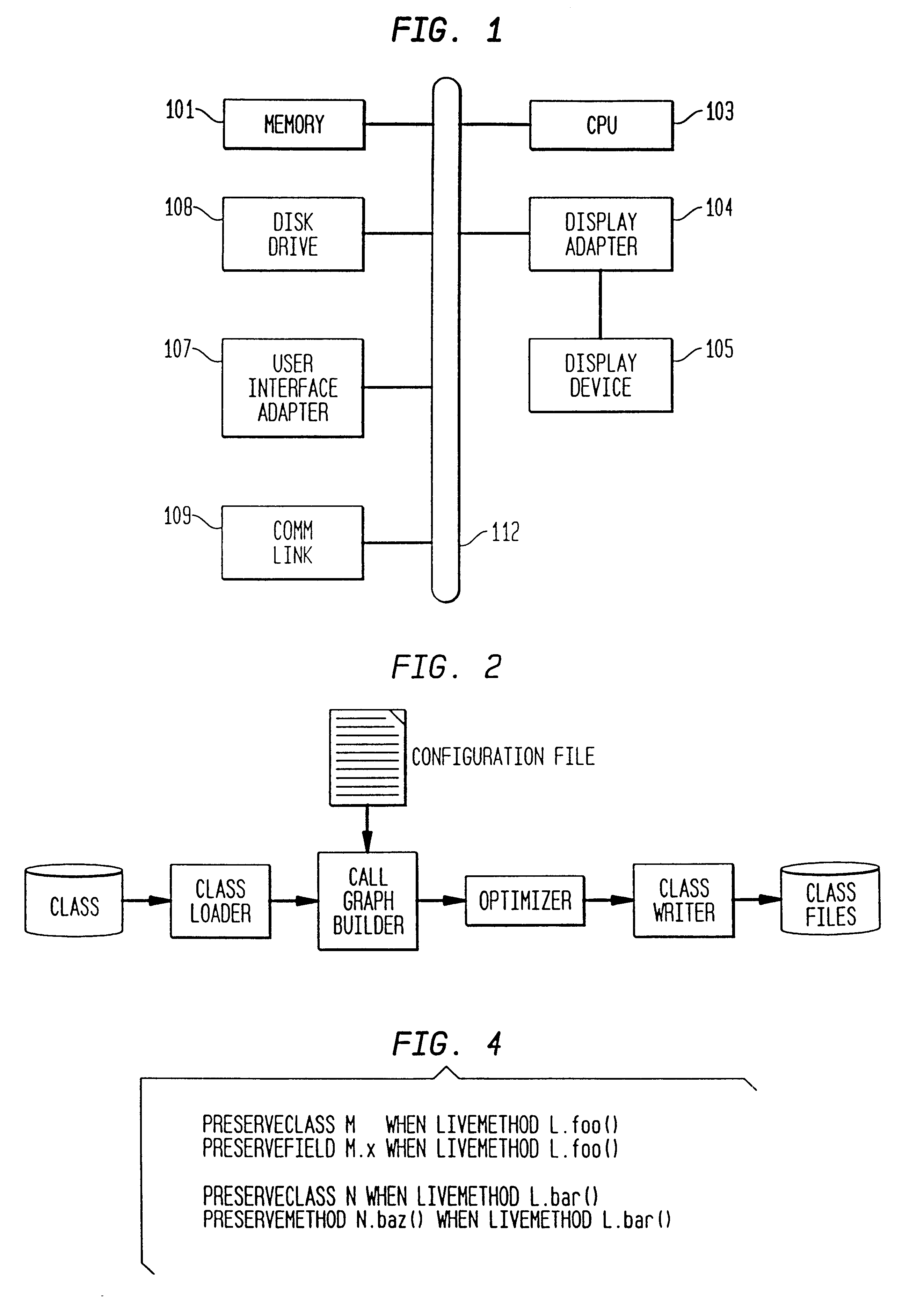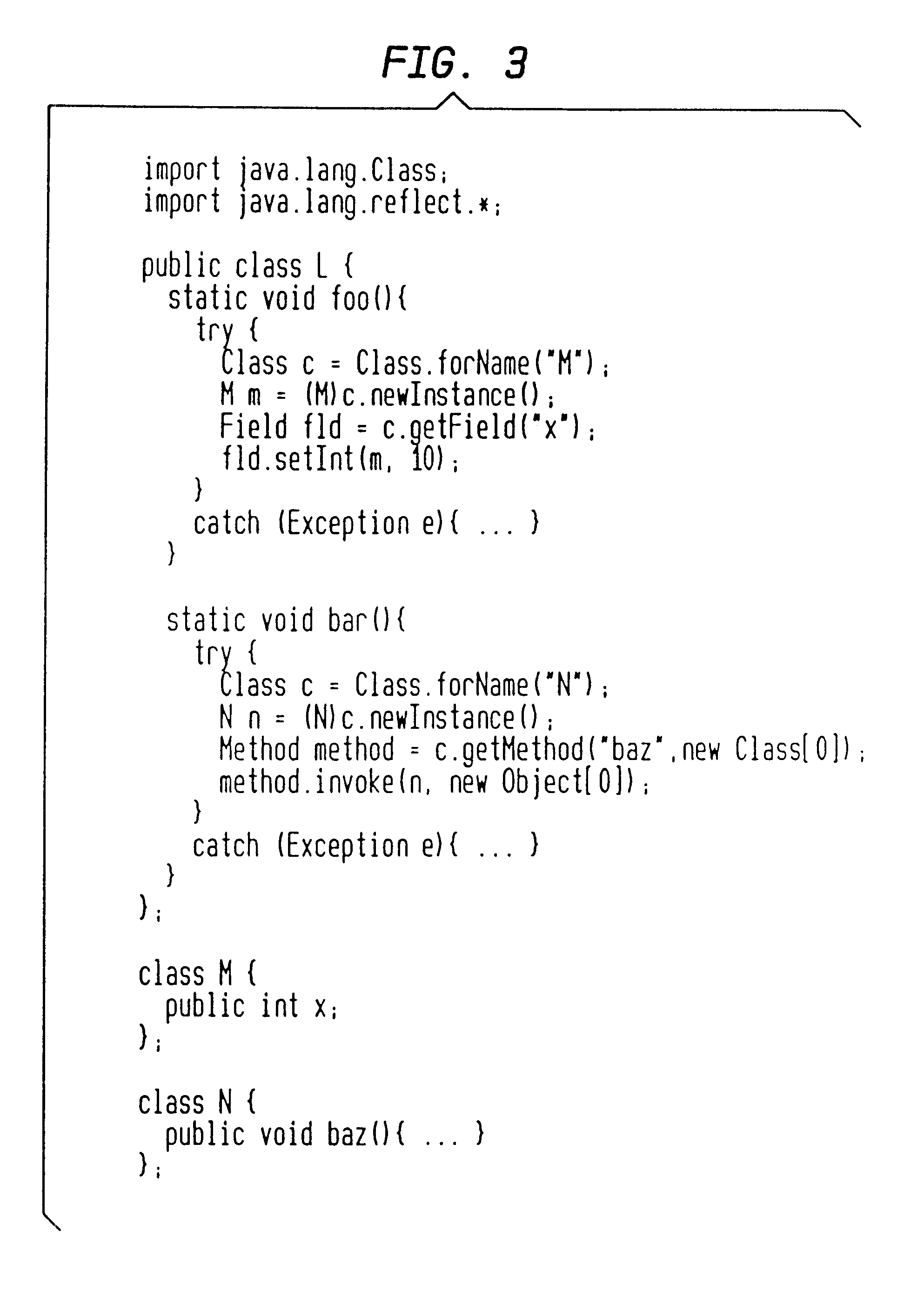Method for accurately extracting library-based object-oriented applications
a library-based object-oriented application and library technology, applied in the field of object-oriented programming (oop), can solve the problems of large amount of time to download, large amount of space to store, and large amount of library-based object-oriented applications
- Summary
- Abstract
- Description
- Claims
- Application Information
AI Technical Summary
Problems solved by technology
Method used
Image
Examples
Embodiment Construction
FIG. 3 shows a small class library in which reflection is used. The library consists of 3 classes: L, M and N. Class L has two methods: foo and bar. Method foo uses reflection to dynamically load class M, create an object of type M, and assign the value `10` to the integer field x of that object. Method bar uses reflection to dynamically load class N, create an object of type N, and invoke the baz method on that object. For convenience, the term library class will henceforth be used to refer to classes that occur in a class library, and the term application class will be used to referred to classes that are not part of a class library. It is assumed that library classes do not inherit from application classes.
FIG. 4 shows a configuration file library. conf for the class library of FIG. 3. This configuration file specifies the following:
class M is instantiated and should be preserved if method L.foo ( ) is live,
field M.x should be preserved if method L.foo ( ) is live,
class N is inst...
PUM
 Login to View More
Login to View More Abstract
Description
Claims
Application Information
 Login to View More
Login to View More - R&D
- Intellectual Property
- Life Sciences
- Materials
- Tech Scout
- Unparalleled Data Quality
- Higher Quality Content
- 60% Fewer Hallucinations
Browse by: Latest US Patents, China's latest patents, Technical Efficacy Thesaurus, Application Domain, Technology Topic, Popular Technical Reports.
© 2025 PatSnap. All rights reserved.Legal|Privacy policy|Modern Slavery Act Transparency Statement|Sitemap|About US| Contact US: help@patsnap.com



